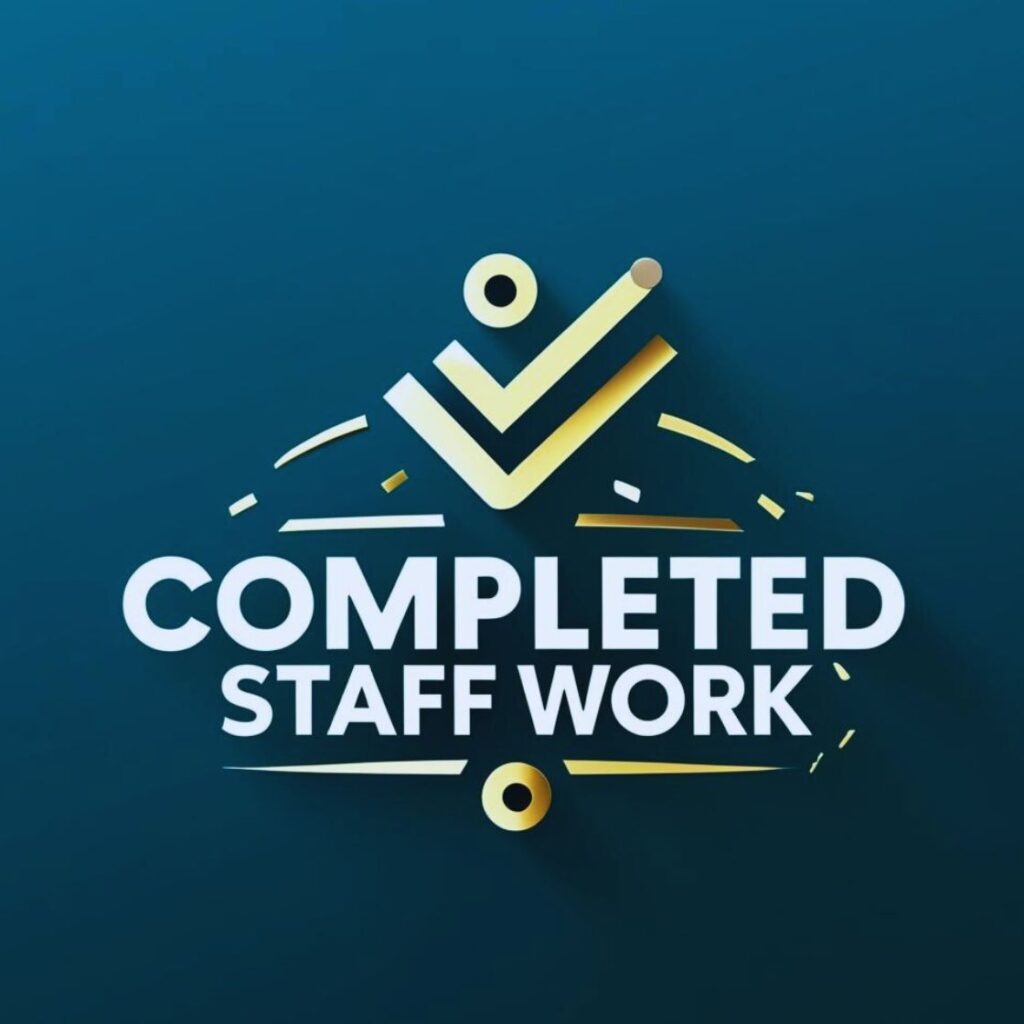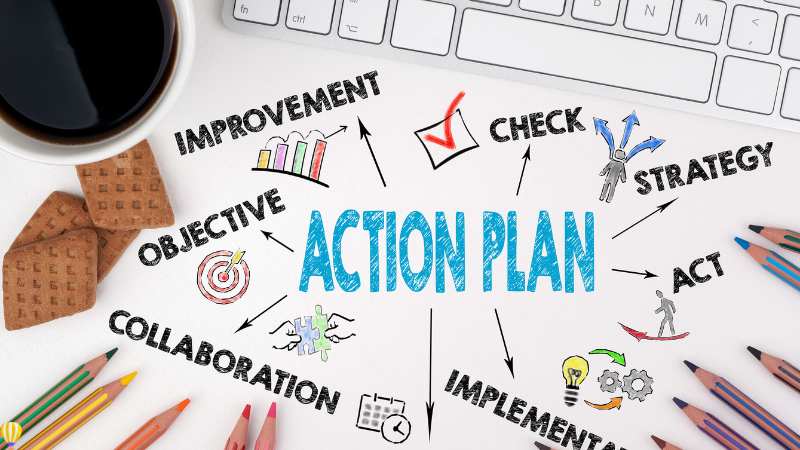Active listening enhances leadership. It builds trust, improves understanding, and strengthens teams. Leaders should genuinely hear others, reflect on their words, and respond thoughtfully. It’s key to success.
Where countless conversations take place daily, the ability to truly listen stands out as a hallmark of effective leaders. Active listening is not just about hearing words but truly understanding and internalizing them.
Leaders who master the art of active and effective listening can foster stronger relationships, build trust, and drive better outcomes.
Improve Active Listening
As you read this guide, you’ll discover ten actionable ways to elevate your listening game and become a more impactful leader. Dive in, and prepare to listen like you never have before.

Maintain Eye Contact
When engaged in a conversation, your eyes can be a powerful tool to show you’re truly present. Maintaining eye contact signifies you’re giving your full attention to the speaker. It’s a non-verbal cue that says, “I’m here with you, and I value what you’re saying.”
This simple act fosters trust and helps in breaking down communication barriers.
Carla, a team lead, often found herself lost in her thoughts during one-on-ones with her team members. One day, Mark, a junior team member, remarked, "Carla, I sometimes feel like you're elsewhere when I talk." Taking this feedback to heart, Carla made a conscious effort to maintain eye contact in all her subsequent interactions. During a meeting with Mark a week later: Mark: "Carla, I've noticed a change in our conversations. I feel more seen, more heard." Carla: "I realized I wasn't fully present in our earlier discussions. Now, I'm making an effort to genuinely connect. Thank you for pointing it out."
- Before starting a conversation, take a deep breath and focus on being present. This simple act can center you and enhance your connection with the speaker.
- If maintaining eye contact feels too intense, try looking at the bridge of the person’s nose. It gives a similar effect without being overwhelming.
- Blink naturally. Staring can come off as aggressive or uncomfortable.
Let your eyes be the window to genuine connection. Engage with intent, and see the difference it makes.
Offer Non-verbal Feedback
Your gestures can echo your attention.
Our body language can often communicate even more than our words.
Offering non-verbal feedback through gestures such as nodding, leaning slightly forward, or mirroring the speaker’s emotions can amplify your listening skills.
Such cues indicate that you’re actively engaged and following the conversation, making the speaker feel valued and understood.
Rina, a department head, was known for her poker face. Her team often couldn’t gauge her reaction during presentations or team updates. Arvin, one of her colleagues, finally decided to address the elephant in the room during a coffee break: Arvin: "Rina, during our updates, I sometimes feel like I'm speaking to a wall. It's challenging to know if you're with us or miles away." Rina: "Oh! I never realized I gave that impression. I always thought I was paying attention." Arvin: "Maybe it's your body language. A nod or smile now and then could change the entire dynamic."
- Practice active facial expressions. A simple nod or smile can assure the speaker that you’re attentive.
- Mirror the speaker’s emotions, whether it’s excitement, concern, or curiosity. It shows empathy and understanding.
- Be conscious of your posture. Leaning forward slightly indicates interest, while crossing arms might seem defensive.
Your body language is a silent dialogue. Use it to reinforce your engagement and support in every conversation.

Avoid Interrupting
Patience paves the path to understanding.
A key tenet of active listening is allowing the speaker to complete their thought without interruption.
By doing so, you offer them the respect and space to express themselves fully. Jumping in prematurely or finishing their sentences can come off as dismissive or even arrogant.
When we patiently wait for the speaker to finish, it’s a clear sign that we value their perspective and are genuinely trying to understand them.
In a trendy co-working space in Metro Manila, Paolo, an enthusiastic project lead, often cut off his teammates in the midst of brainstorming sessions. Mia, a team member, took him aside after one such meeting: Mia: "Paolo, I appreciate your passion, but when you cut me off earlier, it felt like my input didn't matter." Paolo: "I'm sorry, Mia. I get so caught up in the flow of ideas that I forget to pause. I'll work on that." Mia: "Thanks for understanding. Letting each of us complete our thoughts can make our brainstorming even more fruitful."
- Practice active patience by taking a deep breath when you feel the urge to interject.
- If you fear forgetting your point, make a quick note to come back to it after the speaker has finished.
- Use verbal cues such as “I see,” “Go on,” or “Tell me more” to encourage the speaker to continue without you interrupting.
Choose to be a listener first and a speaker second. The insights you gain will be worth the wait.
Ask Open-ended Questions
Unearth deeper insights and meanings.
Using open-ended questions in conversations is a powerful tool to delve deeper into the topic at hand.
Unlike close-ended questions, which often elicit a simple ‘yes’ or ‘no’ response, open-ended inquiries invite the speaker to share more information, feelings, or thoughts. This not only enhances understanding but also demonstrates genuine interest in the speaker’s perspective.
Belle, a team supervisor, was having a catch-up with her junior, Rico. She noticed he seemed distant lately and wanted to understand why: Belle: "Rico, how do you feel about the current project?" Rico: "It's okay, I guess."Belle: "Can you tell me more about what's making you feel 'just okay' about it?" Rico: "Well, I feel like my ideas aren't being considered as much. I've had some suggestions, but I don't know how to bring them up." Belle: "I appreciate you sharing that with me. Let's discuss your suggestions. I'm keen to hear them."
- Start questions with words like “How,” “What,” “Why,” or “Tell me about…” to encourage more comprehensive responses.
- Listen actively to the answer and avoid rushing to the next question. Give space for elaboration.
- Be genuinely curious. Your sincerity in wanting to understand will be evident in the quality of your questions.
Harness the power of open-ended questions to foster richer, more meaningful conversations. The depth of understanding you’ll achieve is unparalleled.
Paraphrase and Summarize
Reflect to connect.
Paraphrasing involves restating what the speaker has shared using different words, while summarizing involves condensing the main points of the conversation. Both techniques are essential in active listening as they assure the speaker that you’re engaged and have understood their message.
Additionally, they provide an opportunity to clarify any misconceptions, ensuring that both parties are on the same page.
At a rooftop lounge in Metro Manila, Grace, a client relationship manager, was discussing a new proposal with her client, Ernesto. She wanted to ensure she had captured all of his requirements: Ernesto: "Our main goal with this campaign is to increase brand awareness among the younger demographic while retaining the trust of our older clientele." Grace: "So, if I understand correctly, you're aiming to strike a balance—capturing the attention of the younger audience without alienating your existing, older customer base. Is that right?" Ernesto: "Exactly! I'm glad you get the essence of what we're aiming for."
- After listening to a long explanation or story, offer a brief summary of what you’ve understood to validate your comprehension.
- If you’re unsure about a particular point, don’t hesitate to say, “So you mean…” or “Are you saying…” to seek clarification.
- Remember, the aim is to understand and connect, not to restate verbatim. It’s okay to use your own words, as long as the essence is captured.
By taking a moment to reflect back what you’ve heard, you’re bridging the gap between mere communication and genuine connection. Make it a habit, and watch your relationships flourish.
Eliminate Distractions
Purity in attention leads to clarity in understanding.
In today’s digital age, distractions are ubiquitous. Be it the constant ping of notifications or the lure of multitasking, these diversions can impede genuine connection.
By eliminating distractions, you signal to the speaker that they have your undivided attention, reinforcing the value you place on the conversation.
This purity in focus facilitates a more profound understanding, fostering authentic dialogue.
In a sleek office space in Metro Manila, Alex, a creative director, always juggled multiple tasks. He believed it made him more efficient. During a feedback session, his colleague, Lara, voiced her concerns: Lara: "Alex, when we discuss projects, I often feel you're not entirely with me. Your eyes drift to your computer or phone, and it's disheartening." Alex: "I didn't realize I was giving that impression. I thought I was just maximizing our time. Lara: "Sometimes, it's not about doing more but about being more present. I think our discussions could be more productive if we were both fully engaged."
- Designate a ‘distraction-free zone’ for essential conversations. This could be a specific room or even just turning off digital devices.
- If you’re in a setting where distractions are unavoidable, like a noisy cafe, position yourself so that you can best focus on the speaker.
- Be transparent. If for some reason you can’t give your full attention, reschedule the conversation for a more appropriate time.
Commit to giving the gift of your full attention. It’s a simple act with profound implications, leading to more meaningful and effective communication.

Stay Present in the Moment
Anchor yourself in the now.
In an era of constant connectivity and endless to-do lists, it’s easy for our minds to wander even in the middle of important conversations. However, true active listening requires us to anchor ourselves in the present moment. By staying mentally engaged, we not only absorb information better but also convey genuine care and interest in the speaker’s words.
During a sunset walk along the Baywalk in Metro Manila, Nina, a startup founder, confided in her friend and advisor, Miguel, about challenges she was facing in her business. She noticed him occasionally getting lost in thought: Nina: "Miguel, you seem distant. Is everything okay?" Miguel: "I apologize, Nina. I've been juggling a few things in my mind. But right now, this conversation with you is what matters most." Nina: "It's crucial for me to have your insights. Can we perhaps find a time when you can be fully present?"
- Grounding techniques, like focusing on your breath or physical sensations, can help pull your attention back to the present.
- If your mind starts wandering, acknowledge it without judgment and gently redirect your focus to the speaker.
- Setting a clear intention before the conversation, such as “I will be fully present,” can mentally prepare you to stay engaged.
Being present is more than just a physical act—it’s a mental commitment. By immersing yourself entirely in the now, you enrich your interactions, fostering deeper connections and insights.

Offer Feedback Appropriately
Engage constructively and meaningfully.
Feedback is an essential component of effective communication. However, the manner in which feedback is delivered determines whether it strengthens the relationship or creates barriers. Constructive feedback, given at the right moment and with empathy, can foster growth, understanding, and collaboration.
In a well-lit conference room in Metro Manila, Daniel, a department head, reviewed the recent project pitched by his team member, Leah. Eager to share her innovative ideas, Leah awaited feedback: Daniel: "Leah, I see where you're going with this, and I appreciate the creativity. However, have you considered the budget constraints we discussed?" Leah: "I did factor them in, but I might've missed a few details. Can you pinpoint where the discrepancies are?" Daniel: "Of course. Let's go through it together. And remember, this feedback is to refine our approach, not to diminish your effort."
- Always begin feedback with a positive observation, setting a collaborative tone.
- Use “I” statements, like “I feel” or “I think,” to make feedback sound less accusatory and more personal.
- Ensure feedback is specific and actionable, so the receiver knows how to move forward.
Feedback, when given with care and genuine intent, becomes a pathway to improvement and mutual growth. Approach it as an opportunity to engage deeply, constructively, and meaningfully.
Read: Understanding Feedback

Empathize with the Speaker
Feel the narrative beneath the words.
Empathy is the ability to understand and share the feelings of another. In the realm of active listening, empathy goes beyond mere understanding; it’s about genuinely feeling the emotions conveyed by the speaker. When we empathize, we don’t just listen to the words; we connect with the underlying sentiments, allowing for a richer, more profound interaction.
In a cozy coffee shop in Metro Manila, Ella, a human resources specialist, met with Ray, an employee who'd recently faced personal challenges: Ray: "Ever since the loss in my family, I've found it hard to concentrate. Everything feels overwhelming." Ella, with a gentle tone: "Ray, I can't imagine how tough it must be for you. Please know that we're here to support you in any way we can." Ray: "Thank you, Ella. It means a lot to know that I'm not alone in this."
- Be fully present. Sometimes, empathy requires silence and just being there for the speaker.
- Avoid immediately trying to ‘fix’ the situation. Often, the act of listening is more valuable than any solution you might offer.
- Reflect the speaker’s feelings with statements like, “It sounds like you’re feeling…” to show that you’re tuned into their emotional state.
Empathy transforms ordinary conversations into extraordinary connections. By feeling the narrative beneath the words, you create a bond that’s rooted in genuine care and understanding. Embrace it, and witness the depth it brings to your interactions.
Practice Active Listening Daily
Cultivate this invaluable skill day by day.
Like any skill, active listening improves with consistent practice. By making it a daily habit, you not only enhance your ability to communicate effectively but also foster deeper, more meaningful relationships. Every conversation, whether with a colleague, friend, or family member, becomes an opportunity to hone this invaluable skill.
In a bustling co-working space in Metro Manila, Samuel, a mentor to many young professionals, was known for his impeccable listening skills. Over lunch, one of his mentees, Liza, asked him about it: Liza: "Samuel, how do you always seem to understand everyone so deeply?" Samuel, with a chuckle: "It's no secret, Liza. I practice active listening daily, in every interaction. Over time, it's become second nature to me." Liza: "I want to be like that too, where every conversation feels meaningful." Samuel: "Start today. With every chat, focus on being present, and you'll see the transformation."
- Dedicate a portion of your day, even if it’s just 5 minutes, to purely listen to someone without distractions.
- Reflect at the end of the day on your listening experiences. Were there moments you drifted off? What could you improve?
- Challenge yourself in challenging environments. Try active listening even in noisy or distracting settings to push your limits.
- Embarking on the journey of active listening is rewarding. By dedicating yourself to practice every day, you’ll not only become a better listener but also enrich your personal and professional relationships. Start today and watch the world around you transform.
You can be an active listener.
Active listening is an important step to becoming a better leader.
Throughout this guide, we’ve explored various facets of this skill, from the power of eye contact to the significance of empathy.
As leaders, professionals, or simply as individuals navigating the vast web of human connections, mastering the art of active listening can profoundly enrich our interactions.
To listen actively is to practice civility.
It’s a gesture that says, “I respect you. I value your thoughts. I acknowledge your feelings.” It’s a bridge that mends gaps, fosters understanding, and binds us in the shared tapestry of our experiences.
To embrace active listening is to embrace the very essence of human connection. It’s a journey, not just towards becoming better communicators, but towards building a more understanding, compassionate, and civil world.
As you step forward from this guide, may you carry the torch of active listening, illuminating every conversation, every relationship, and every facet of your life.
The path to a more connected world begins with one simple act: truly listening. Embrace it, champion it, and watch the ripples of change unfold.
Extend the Journey of Civility to Your Organization
Active listening is but one facet of the vast and impactful realm of civility. But why stop at just mastering this skill when there’s a whole universe of professional development awaiting you and your team?
Introducing the Civility Workshops.
Designed and delivered personally by me, these workshops are tailored to empower professionals like you. Beyond just active listening, we delve deep into various aspects of professional communication, team collaboration, and personal growth. Our aim? To mold individuals into value-adding professionals who not only excel in their roles but also foster an environment of respect, understanding, and genuine collaboration.
The results? Enhanced team dynamics, heightened productivity, and a workplace that resonates with positivity and growth.
If you’re committed to elevating your organization’s professional landscape, the Civility Workshops are your answer. Equip your team with the tools they need to thrive in today’s competitive world, while also nurturing a culture of respect and mutual growth.
Reach out today and let’s chart a path to a more civil, connected, and collaborative future for your organization. The journey to greatness begins with one simple step: understanding each other better. Let’s embark on this journey together.
Join the Conversation & Spread the Word
Your journey with this article doesn’t have to end here. In fact, it’s just the beginning. Dive deeper into the realm of communication and civility by exploring more of our articles. Each piece offers insights, tools, and strategies to further refine your skills and enrich your professional landscape.
Share Your Thoughts: We’d love to hear from you. What resonated with you the most? Do you have personal experiences or strategies that align with active listening and civility? Share your insights, stories, and feedback in the comments below.
Spread the Message: If you found value in this article, don’t keep it to yourself. Share it with your network on social media. By doing so, you’re not just sharing information; you’re catalyzing a movement towards a more civil and communicative world.
Reprint & Share: If you feel that this article aligns with the ethos of your organization or resonates with your audience, you’re welcome to reprint it in your newsletter or website. All we request is that you inform us and attribute the source accordingly.
Together, let’s amplify the message of civility, champion the importance of effective communication, and inspire more individuals to become active listeners. The ripple effect of change begins with each one of us. Let’s make it count.



